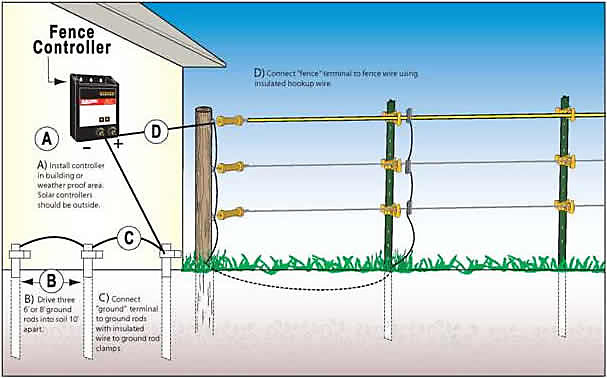This piece of re-bar is called a "concrete encased electrode" or informally a "ufer" pronounced "you-fir" ground. If you do not have a ufer ground, you will need to drive ground rods.
How to Install a Residential Grounding Electrode
Check your local codes, but in most areas you need two 8' long ground rods driven at least 6' apart. The grounding electrode conductor is the conductor that connects the ground bar or lug in the service equipment to the grounding electrode. There are options here also, if you want to get technical, but for the purpose of simplicity, I'm only going to give you one.
For your grounding electrode conductor, you will use 4 copper, it can be bare or insulated, stranded or solid. The reason I give only one choice is simple, it fits for any type installation I cover on this website! There are several clamp types that are approved for this connection.

The most popular for use with a ufer ground is the two-piece clamp. The most popular used with ground rods is called an "acorn" clamp. Your grounding electrode conductor must be continuous!
How to Install a Ground Rod
This means you need to run the 4 copper from the service, through the first clamp, and to the second clamp without cutting it. The acorn clamp slides down over the top of the ground rod, with the wire resting in the "v" shape opposite the bolt, between the clamp and the ground rod. Then just securely tighten the bolt. Route your wires neatly and secure them out of harms way. The wire running across the ground to the first ground rod, and between the ground rods will need to be buried in a small trench or secured against the house.
You only have one ufer, so keeping the grounding electrode conductor continuous here should not be a problem.
Run the 4 copper from the service to the ufer, attach the clamp securely to the ufer and, using the set screw, secure the wire into the small hole in the clamp. Both the panel and meter main cabinets usually have a small knockout in the bottom that is just the right size for the 4 copper, if you use this hole you don't need any other connector.
- speed dating in hull?
- REPORT AN OUTAGE?
- i love him but hes dating someone else?
- Ground Rod Installation?
- dating groups melbourne?
- asian dating in bay area?
The resulting resistance in some of these cases is well in excess of 1, ohms. The lowest possible resistance is best and we have measured some as low as 15 ohms. Unfortunately, we have no control over how well your electrical panel is grounded.
There's a lot more to a grounding system than that
If you do not provide proper grounding in accordance with the NEC, there is no way to mitigate electrical damage that may occur beyond your electrical panel. If you have concerns about your business or home grounding, contact a licensed electrical contractor.
Among the various situations that may occur on your electrical system, the most common are high voltage surges and damage or loss of one of the Service Conductors. Another critical issue relative to sensitive electronic equipment is the proper installation and operation of Surge Protective Devices SPD.
How to Install a Ground Rod | www.mfarrow.com
The best surge protection equipment is much less effective without a properly installed and maintained grounding system. The SPD works by shunting damaging electrical surges away from your sensitive electronics to ground and they need the best possible ground to work properly. It is therefore incumbent upon you to have and to maintain a NEC code-approved ground system as part of your electrical system.
